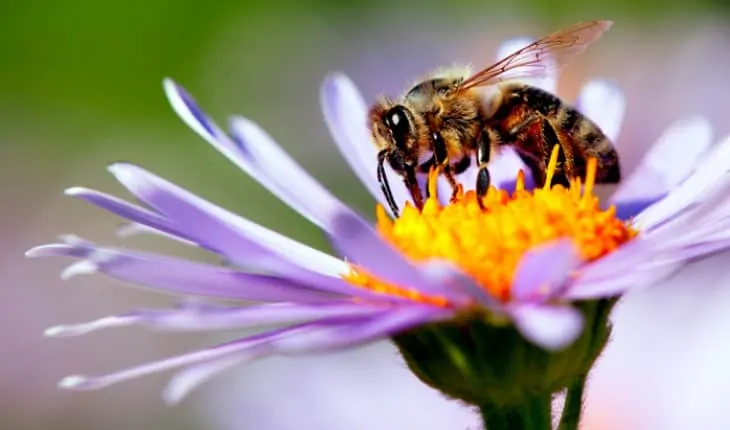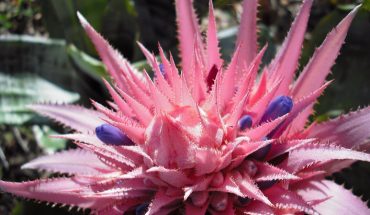Venom from honeybees found to kill aggressive breast cancer cells – in new Australian research from the Harry Perkins Institute of Medical Research published in Nature Precision Oncology
Honeybee venom induces cancer cell death in hard to treat triple-negative breast cancer with minimal effect on healthy cells
Fast Facts
- Breast cancer is the most commonly occurring cancer in women worldwide[1]
- It is the second most common cause of death from cancer among females[2]
- Triple-negative breast cancer (TNBC) accounts for 10-15% of all breast cancers[3]
- There are currently no clinically effective targeted treatments for TNBC
Using the venom from 312 honeybees and bumblebees in Perth Western Australia, Ireland and England, Dr Ciara Duffy from the Harry Perkins Institute of Medical Research and The University of Western Australia, tested the effect of the venom on the clinical subtypes of breast cancer, including triple-negative breast cancer, which has limited treatment options.
Results published in the prestigious international journal NJP Nature Precision Oncology revealed that honeybee venom rapidly destroyed triple-negative breast cancer and HER2-enriched breast cancer cells.
Dr Duffy said the aim of the research was to investigate the anti-cancer properties of honeybee venom, and a component compound, melittin, on different types of breast cancer cells.
“No-one had previously compared the effects of honeybee venom or melittin across all of the different subtypes of breast cancer and normal cells.
“We tested honeybee venom on normal breast cells, and cells from the clinical subtypes of breast cancer: hormone receptor positive, HER2-enriched, and triple-negative breast cancer.
“We tested a very small, positively charged peptide in honeybee venom called melittin, which we could reproduce synthetically, and found that the synthetic product mirrored the majority of the anti-cancer effects of honeybee venom,” Dr Duffy said.
“We found both honeybee venom and melittin significantly, selectively and rapidly reduced the viability of triple-negative breast cancer and HER2-enriched breast cancer cells.
“The venom was extremely potent,” Dr Duffy said.
A specific concentration of honeybee venom can induce 100% cancer cell death, while having minimal effects on normal cells.
“We found that melittin can completely destroy cancer cell membranes within 60 minutes.”
Melittin in honeybee venom also had another remarkable effect; within 20 minutes, melittin was able to substantially reduce the chemical messages of cancer cells that are essential to cancer cell growth and cell division.
“We looked at how honeybee venom and melittin affect the cancer signalling pathways, the chemical messages that are fundamental for cancer cell growth and reproduction, and we found that very quickly these signalling pathways were shut down.
“Melittin modulated the signalling in breast cancer cells by suppressing the activation of the receptor that is commonly overexpressed in triple-negative breast cancer, the epidermal growth factor receptor, and it suppressed the activation of HER2 which is over-expressed in HER2-enriched breast cancer,” she said.
Western Australia’s Chief Scientist Professor Peter Klinken said “This is an incredibly exciting observation that melittin, a major component of honeybee venom, can suppress the growth of deadly breast cancer cells, particularly triple-negative breast cancer.
“Significantly, this study demonstrates how melittin interferes with signalling pathways within breast cancer cells to reduce cell replication. It provides another wonderful example of where compounds in nature can be used to treat human diseases”, he said.
Dr Duffy also tested to see if melittin could be used with existing chemotherapy drugs as it forms pores, or holes, in breast cancer cell membranes, potentially enabling the entry of other treatments into the cancer cell to enhance cell death.
“We found that melittin can be used with small molecules or chemotherapies, such as docetaxel, to treat highly-aggressive types of breast cancer. The combination of melittin and docetaxel was extremely efficient in reducing tumour growth in mice.”
Dr Duffy’s research was conducted as part of her PhD undertaken at Perth’s Harry Perkins Institute of Medical Research at the Cancer Epigenetics laboratory overseen by A/Prof. Pilar Blancafort.
“I began with collecting Perth honeybee venom. Perth bees are some of the healthiest in the world.
“The bees were put to sleep with carbon dioxide and kept on ice before the venom barb was pulled out from the abdomen of the bee and the venom extracted by careful dissection,” she said.
While there are 20,000 species of bees, Dr Duffy wanted to compare the effects of Perth honeybee venom to other honeybee populations in Ireland and England, as well as to the venom of bumblebees.
“I found that the European honeybee in Australia, Ireland and England produced almost identical effects in breast cancer compared to normal cells. However, bumblebee venom was unable to induce cell death even at very high concentrations.
One of the first reports of the effects of bee venom was published in Nature in 1950, where the venom reduced the growth of tumours in plants. However, Dr Duffy said it was only in the past two decades that interest grew substantially into the effects of honeybee venom on different cancers.
In the future, studies will be required to formally assess the optimum method of delivery of melittin, as well as toxicities and maximum tolerated doses.
[1] https://www.wcrf.org/dietandcancer/cancer-trends/breast-cancer-statistics
[2] https://canceraustralia.gov.au/affected-cancer/cancer-types/breast-cancer/statistics
[3] https://www.cancer.org/cancer/breast-cancer/understanding-a-breast-cancer-diagnosis/types-of-breast-cancer/triple-negative.html
- Gut microbiome could delay onset of type 1 diabetes - 3rd April 2025
- The da Vinci 5 Robot Is Set To Transform Bariatric Care: - 31st March 2025
- Beyond money: the hidden drivers fuelling child food insecurity - 31st March 2025






